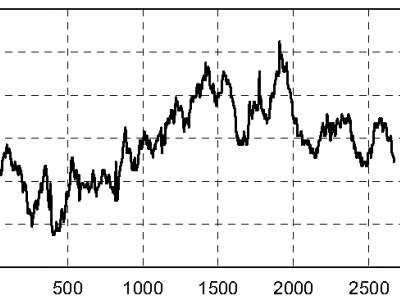Transportation
The presented dataset encompasses a diverse collection of road images captured under a multitude of environmental conditions, specifically sourced from Tunisian highways. Comprising textual annotations in two languages, this dataset is tailored to facilitate research and development in the domain of scene understanding, language processing, and bilingual context analysis. The collection includes 2006 word pictures with Latin and Arabic text occurrences that were taken from 3000 road scene images. The dataset's versatility enables investigations into the robustness of lang
- Categories:
 124 Views
124 ViewsThe presented dataset encompasses a diverse collection of road images captured under a multitude of environmental conditions, specifically sourced from Tunisian highways. Comprising textual annotations in two languages, this dataset is tailored to facilitate research and development in the domain of scene understanding, language processing, and bilingual context analysis. The collection includes 2006 word pictures with Latin and Arabic text occurrences that were taken from 3000 road scene images. The dataset's versatility enables investigations into the robustness of lang
- Categories:
 43 Views
43 ViewsChengdu is one of the largest cities in southwest China and the capital city of Sichuan Province. With a large population and huge transportation needs, public transportation is of vital importance to this city. After years of construction and development, Chengdu's public transportation system has formed a modern multi-level and multi-modal transportation network including buses, subways, railways and BRT (Bus Rapid Transit System). The construction and operation of these transportation systems have provided Chengdu citizens with convenient and fast travel modes.
- Categories:
 162 Views
162 Views
This zip file contains three datasets for MO-MVRPSDPTW:
1) Small and Medium-scale Revised Solomon Instances: This set contains 92 instances. All instances are created based on the modified Solomon instances. The number of customers is in {5,10,15} and 100 for small and medium-scale instances, respectively. The number of recharging stations is up to 21.
- Categories:
 34 Views
34 Views
This dataset provides the data collected in the scope of a Systematic Literature Review (SLR) study that focuses on systematically gather and analyse the existing literature on SOTIF published during 2018-2023. By performing a SLR on SOTIF, we have determine the factors associated with the successful implementation of SOTIF measures, the challenges arise when ensuring SOTIF for ADSs, and research gaps from the SLR of existing literature on SOTIF. The dataset can be useful for the researchers and practitioners.
- Categories:
 65 Views
65 Views
This document is a supplementary file to the our article entitled “A Wireless Charging System Based on a DR-IPT to Power a UAV from Distribution Poles” which is published in IEEE Transactions on Industry Applications journal. This documents presents the result dataset regarding the optimizations performed to determine optimum parameters for domino resonant inductive power transfer system under several case studies.
- Categories:
 219 Views
219 ViewsWith the rapid development of high-speed trains (HSTs), safety and reliability in HSTs operation have attracted plenty of attention. The wheel, as one of the most crucial components, requires absolutely high reliability. The non-roundness wear is a typical failure mode of the HST wheel, which can have a detrimental influence on track and train components, leading to increased risks of rail breaks, sleeper cracking, high-cycle fatigue of wheels and axles, and bearing damage.
- Categories:
 72 Views
72 ViewsThis data provides an overview of the simulation of Hybrid Electric Vehicles (HEVs) using MATLAB. HEVs have emerged as a promising solution for reducing emissions and improving fuel efficiency. MATLAB offers a flexible platform to accurately model and analyze the complex dynamics of hybrid powertrains, including various components and control strategies. The simulation capabilities enable the evaluation of HEV performance under different conditions, optimization of designs, and exploration of factors impacting energy consumption.
- Categories:
 802 Views
802 Views
The provided dataset encompasses information essential for analyzing and modeling the research findings presented in the paper, "Driver-pedestrian interactions at unsignalized crossings are not in line with the Nash equilibrium." This dataset includes an array of data related to road user kinematics, demographic characteristics, and personality traits such as social value orientation.
- Categories:
 154 Views
154 Views
Perth-WA is the localization dataset that provides 6DoF annotations in 3D point cloud maps. The data comprises a LiDAR map of 4km square region of Perth Central Business District (CBD) in Western Australia. The scenes contain commercial structures, residential areas, food streets, complex routes, and hospital building etc.
- Categories:
 435 Views
435 Views



